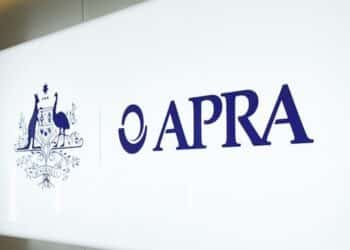An ifa straw poll conducted over the past three weeks has found no one remuneration model has emerged as a clear front runner, with a range of views on which fee model is considered “best practice”.
Of the 285 respondents, 73 (25.6 per cent) indicated preference for a “flat fee monthly/annual retainer”, followed by the “hourly rate” (10.5 per cent), “asset-based fee” (10.2 per cent) and “flat transactional-based fee” (8.4 per cent).
Almost half of the respondents (45.3 per cent) voted for a “hybrid of any of the above”.
Elixir Consulting managing director Sue Viskovic, an expert on financial planning business models and author of Pricing Advice, said partly the results reflect that the term “best practice” is problematic.
“There is no one-size-fits-all approach to remuneration; every business will need to work out the variables of their client base and what it costs to run their practice,” she told ifa.
Whether or not a hybrid model is right for a financial advice practice will depend on what that hybrid involves and the definition of ‘hybrid’, Viskovic said.
Elixir’s research shows that a hybrid model, whereby clients are charged by a flat upfront engagement fee followed by an ongoing asset-based fee, is the “most popular at the moment” with many practices finding this model easy to administer.
However, Viskovic said this particular hybrid model can “restrict the type of advice [advisers] can offer, especially restricting them from servicing clients that they can’t manage money for”.
Kate Humphries of Licensee Pathway Services told ifa last month that while hybrids can be right for some businesses, they can be “structurally complicated and therefore more difficult to communicate to a client”.
Of the stand-alone remuneration models, Viskovic said she is encouraged by the strong votes in favour of a “flat monthly/annual retainer”, which is the model that is likely to be right for the “broadest range of advice businesses”.
“These figures suggest a steady increase over the years, which is good to see,” she said. “When the industry first started moving away from commissions I think it saw asset-based fees as just the easiest model, so it was very popular. But there is now definitely a swing away from asset-based fees.”
She said the move away from asset-based fees may have been aided by the stance of the regulator and APES board in recommending practitioners to adopt alternative models.
At the same time, Viskovic expressed concern at the 10.4 per cent of respondents who voted for the “hourly rate”, saying it is a potentially “dangerous” model for long-term profitability.
“While it’s true that many lawyers and accountants use this model, evidence suggests many are moving away from it,” she said. “While clients understand it because it’s been around for so long, they don’t like it.”
For deeper analysis of the fee-for-service remuneration model debate see the upcoming cover feature in ifa magazine.
Have your say in the latest ifa straw poll here:




GERRY, I’m a Senior Planner for a big 4 bank and very proud to point out that I’m not here for FUM. I couldn’t tell you what FUM I manage or how much FUM I wrote last year. I don’t measure it nor care. I provide holistic advice, including direct investments (i.e. shares, hybrids, invest property, etc) and also offer strategic only advice without any product. I charge an annual retainer for my ongoing clients (flat dollar) and flat dollar initial advice fees too (no implementation or entry fees), just a fee for the ADVICE, based on complexity, not $. I completely understand that I am sadly the exception more than the norm in the world of banking but the model at my bank effectievly allows me to run my own business within the banks business. My business would differ as much from the guy doing my role at another location as it would with some local IFA’s. Quality planners are quality planners, bank or not.
Terry and Gerry, we seem to be reaching agreement-if we look after our own turf and hold loyal clients-word of mouth will lift us to where we want to be-trusted and professional. Let the relevant professional bodies sort out the cow boys AND watch the shift to “real” planners not interested in FUM. We beat those planners very simply by just doing what we do well in a transparent non aligned manner.
I think what i’m trying to say Terry is that how one charges does not always demonstrate professionalism. Most advisers are doing a great job…but in reality we’re only going to get more bogged down with red tape and compliance because i’m not sure ASIC understands the nature of this business. Banks now dominate the advice and product….its all about FUM. So if the majority of the industry is still about getting FUM inflows to satisfy shareholders…well seriously, the community perception of advisers can’t improve. But i don’t think we should be bogged down with surveys…it’s what your own clients think that counts.
Gerry,
I understand your concerns about solicitors, especially when it comes to divorce settlements and custody arrangements. We all have anecdotes about the protracted expensive nature of these conflicts, once solicitors are engaged.
However that is not the point. We are discussing Adviser remuneration models, that will be satisfactory to ASIC, the investors, and to us.
We can only control (or try to anyway) our own neck of the woods. I long for the day that we are again respected in the general community for our knowledge, and impartial advice on increasing the wealth of our clients.
Our clients already know how good we are, and this is reflected in their loyalty. We need to gain a wider community respect, if only for our own satisfaction.
What do you think?
well i just had a client come in requiring $50,000 from his allocated pension to pay legal fees for a daughter’s custody battle…..$50K yep, that’s on top of the $50k they’ve already paid to the previous lawyer who stuffed up. All hail fixed fees. Get paid for no result…
And that Terry is sooo true. letter of engagement first and the rest flows and guess what–you are ready for FDS.
It probably matters not what fee for service model you use, as long as it is not a % or commission based remuneration.
Negotiated fees are completely transparent, and if done properly, the investors will be told precisely what:
– fees they will pay during the year, and
– services they can expect for those fees.
As long as they understand what bang they are getting for their buck, you will find them very appreciative, and long term clients.
Fixed fees, agreed and documented with the client before work starts are the most transparent. Even some law firms are now doing this. Is there a role for fee funding like http://www.quickfee.com.au for financial advisers>
can not actually say I have ever met anyone who appreciates being billed for , Photocopying, stamps, phone calls, and anything else a lawyer can dream up to try and justify their accounts, maybe we should start charging for paperclips. What a messed up system we operate in. We have a federal government telling self employed advisers how to operate their businesses. When they get a $1 of revenue in and spend $1.24 these knuckle heads in Canberra still havent worked out that you can not spend more than you actually earn, and yes they introduce FOFA to tell us how to run our businesses, what an absolute disgrace,,
A lot of accountants are moving to an annual retainer system with a monthly direct debit…..better for their cashflow and better than chasing up invoices…..a system financial planners have been using for decades when you think about it, yet they were scorned.
Time based billing is open to manipulation….just looks at lawyers fees. Open disclosure up front they are not…..most people suffer seizures when they get the lawyers bills. Actually i might start charging like a lawyer “please pay me $20,000 now for work I may or may not do.
Many years ago a Judge critised lawyers hourly charging because it is not transparent. How do you know the lawyer / accountant spent 4 hours on your work when you were charged for 4 hours – not suggesting lawyers / accountants are not honest when charging – only its not transparent. For all its faults commission or asset % based charges are the only transparent ways to charge.
While its true that many lawyers and accountants use this model, evidence suggests many are moving away from it, she said. While clients understand it because its been around for so long, they dont like it.
What a sweeping statement to make, based on what data? Every lawyer and accountant I’ve dealt with (not many to be fair), in Aus and the US has used an hourly fee structure for the ‘retail’ market. NO smoke, no mirrors, you ask a Q and get charged for their experience. If you don’t like it then you go elsewhere, so they have to give ‘value’.
Actually, advisers can use what ever model suits, Flat fixed fee, negotiated yearly works well for our practice. No ups or downs as with %%% s, cash flow and budgets are very predictable, reporting is easy-FDR will be likewise. The KISS principle works best for us. Easy, simple to implement and great for business and clients appreciate it as well. If you have a different model and it works — go for it. Why the fuss?